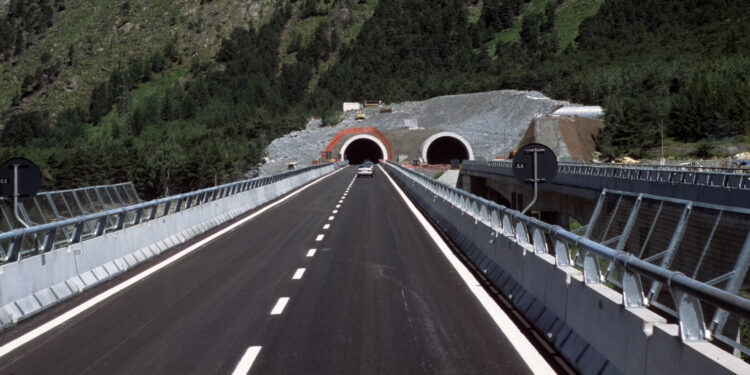Brussels – The Frejus tunnel has been closed to rail traffic since late August last year, and since then, nothing has moved at the border between Piedmont and French Savoy. After delays and postponements, the French department announced a further delay in the reopening to an unspecified date in the first quarter of 2025. Due to the situation that will remain blocked and is creating disruptions to logistics and freight operators – but also more generally for all travelers who make use of the high-speed rail link between Italy and France – the European Commission received two parliamentary questions to clarify what can be done to reopen the Frejus tunnel rail link as soon as possible.
Italy is particularly interested in the issue “since, according to some estimates, about 60 percent of Italian exported goods pass through Alpine crossings and other member states. The Frejus tunnel is an important crossing of the Mediterranean corridor of the Trans-European Transport Networks (TEN-T),” the newly elected MEP of the Democratic Party, Pierfrancesco Maran, said in the parliamentary question supported by the entire PD delegation. According to a PD note to the EU Parliament, the text submitted by the former Milan City Councilman (between 2011 and 2024) and since July 16, a member of the European Parliament asked the EU executive if it is aware of the issue, what measures it intends to take in this regard, and if it is in contact “with the Italian and French authorities.”
The Frejus tunnel was closed after a landslide in the Saint-André municipality (Savoy) on August 28, 2023. Initially, it caused the interruption of both road and rail traffic between Piedmont and French Savoy. After a few weeks, the A43 highway – which connects France and Italy -was restored for cars and trucks, but the tunnel through which the railway, one of the continent’s most important channels for transporting goods and people, passes was not. Since January of this year, the French high-speed TGV line between Milan and Paris has restarted for passenger transport, but only thanks to a system of replacement buses, which, however, involve longer travel time and different changes in the means of transportation on the line.
Restoration work is continuing with significant delays, and in recent months, reports emerged that the railway was to be reopened by December 2024. However, on July 31, French authorities announced that this would not happen before the first quarter of next year “if no new serious geological risks occur.” Also according to reports from the Savoie department, the work is complicated by the steepness and instability of the cliff, with more than 20 technicians specializing in high-altitude rope work (at over 200 meters) taking turns seven days a week, from 6 a.m. to 8 p.m.

It was not enough for MEPs, not only the PD. “Considering the long-planned closure of the Mont Blanc tunnel for maintenance work, there is a high risk of a blockade to cross-border trade,” the Lega’s delegation to the EU Parliament warned, submitting another parliamentary question to the Commission “to ask to intensify the dialogue with the French authorities to determine a timeline by which the section (of the Frejust tunnel) will be reopened” and to “suggest financial support for operators who have had to suspend activities.” Even if Lega MEPs speak of an “immediate interest on the part of the Italian authorities” -which “must necessarily be followed by a response from the EU” – the PD’s Maran points the finger at the Lega secretary and deputy prime minister in the Meloni government Matteo Salvini: “The inertia of the government, and in particular of the Minister of Transport, who seems unable to find a solution for Italian haulers, is very surprising.”
English version by the Translation Service of Withub






